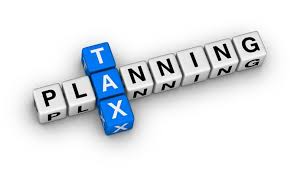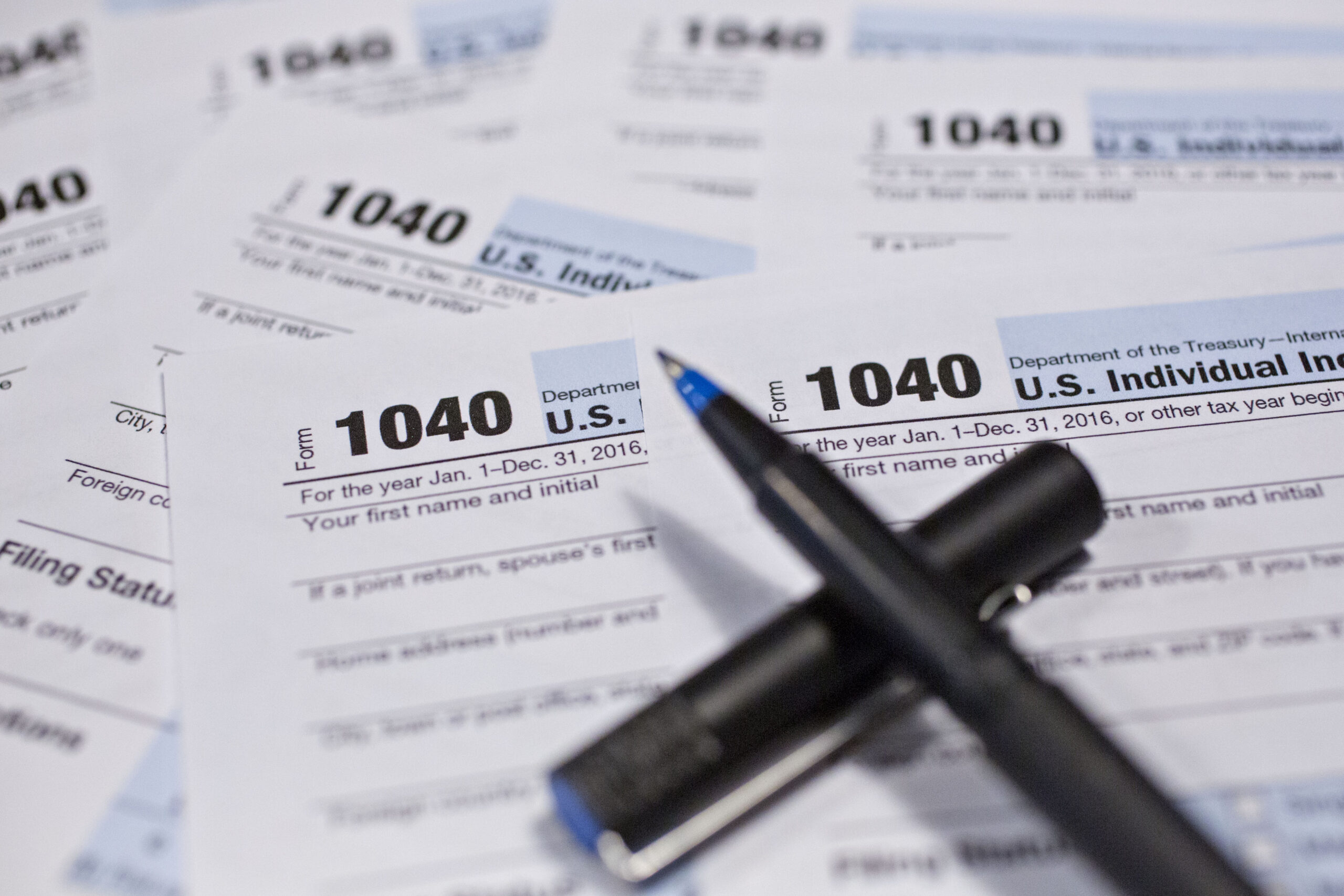What is strategic tax planning?
Tax Planning Defined
You have a business venture and it is making money. Your accountant projects your income and the corresponding tax that you will have to pay. You are hesitant to shell out cash to pay your tax liability. So, you schedule a tax consultation with your accountant. The accountant can make suggestions on ways to legally reduce your expected tax liability. That is called tax planning.
Tax planning is commonly defined as the manner of forecasting your tax liability and creating circumstances and ways to reduce it. Tax planning involves the analysis of your financial situation from a tax perspective with the end view of tax efficiency. However, tax planning should not be confused with tax avoidance as the latter includes ways to use tax laws that are not intended by Congress. On the other hand, when you use tax laws to reduce your tax payable in a legal manner that abides by the tax laws, it is referred to as tax planning.
Steps for Tax Planning
- Start Early
Most people do their taxes in March or April when the deadline for filing tax returns is approaching. If you don’t start making decisions that can reduce your tax bill until after December 31 or the year-end, you will be stuck with your current tax liability. Thus, it is highly encouraged that tax planning should start early to give you more time to make a good estimate of your investment gains or losses and income. The earlier you can get this information the more time you have to do something about it.
For example, you have an expected gain from an investment. This gain will put your total income within a higher tax bracket than the previous year, resulting in a higher tax. But, given that you have determined an estimate of your total income, you are able to plan out some deductions to put your income back into a lower threshold.
- Assess Tax Liability
Tax liability is the amount of tax payable based on current and applicable tax laws. An event or transaction that results in a tax consequence triggers the calculation of the tax liability. The calculation is done by multiplying the applicable tax rate on your determined tax base. The tax base could either be your income or asset balance during the period. The resulting product will be your taxable amount for the tax period. Having a certain estimate of your tax payable is helpful for working toward a plan that results in savings. The amount of tax liability computed previously will allow you to determine how much to invest to save on tax.
- Profile Risk Level
Since tax planning includes investment mechanisms designed to reduce your tax liability, it is important that you do risk profiling. It is a process of finding an optimal level of investment risk that your current financial situation and other personal circumstances may permit.
To come up with a risk profile, you need to consider the following:
- Risk Required: the risk associated with the return you want to achieve
- Risk Capacity: the level of risk that you can afford to take
- Risk Tolerance: the risk level that you are comfortable with
These characteristics must be assessed separately and compared to one another to come up with a trade-off decision to achieve optimum results.

Understanding Your Tax Basics
No matter what the season or your unique circumstances, when it comes to your taxes, planning usually pays off in a lower tax bill. The following is provided so that you may have a basic understanding of taxes before you discuss filing options and strategies.
Filing Status – Except for a surviving spouse, or married individuals who have lived apart for the entire year, your filing status depends on your marital status at the end of the tax year. Generally, if you are married at the end of the tax year, you have three possible filing status options: Married Filing Jointly, Married Filing Separate, or if you qualify, Head of Household. If you were unmarried at the end of the year, you would file as Single status, unless you qualify for the more beneficial Head of Household status.
Head of Household is the most complicated filing status to qualify for and is frequently overlooked as well as incorrectly claimed. Generally, the taxpayer must be unmarried AND:
- Pay more than one half of the cost of maintaining as his or her home a household which is the principal place of abode for more than one half the year of a qualifying child, or an individual (relative) for whom the taxpayer may claim a dependency exemption, or
- Pay more than half the cost of maintaining a separate household that was the main home for a dependent parent for the entire year.
A married taxpayer may be considered unmarried for the purpose of qualifying for the Head of Household status if the spouses were separated for at least the last six months of the year, provided the taxpayer maintained a home for a dependent child for over half the year.
Surviving Spouse (also referred to as Qualifying Widow or Widower) is a rarely used status for a taxpayer whose spouse died in one of the prior two years and who has a dependent child at home. The joint tax rates are used, but no exemption is claimed for the deceased spouse. In the year the spouse passed away, the surviving spouse would file jointly with the deceased spouse if not remarried by the end of the year.
Adjusted Gross Income (AGI) – AGI is the acronym for Adjusted Gross Income. AGI is generally the sum of a taxpayer’s income less specific subtractions called adjustments (but before the standard or itemized deductions and exemptions). Many tax benefits and allowances, such as credits, certain adjustments and some deductions are limited by a taxpayer’s AGI.
Taxable Income – Taxable income is your AGI less deductions (either standard or itemized) and your exemptions. Your taxable income is what your regular tax is based upon using either the IRS tax tables or the tax rate schedule.
Marginal Tax Rate – Not all of your income is taxed at the same rate. The amount equal to the sum of your deductions and exemptions is not taxed at all. The next increment is taxed at 10%, then 15%, etc., until you reach the maximum tax rate. When you hear people discussing tax bracket, they are referring to the marginal tax rate. Knowing your marginal rate is important, because any increase or decrease in your taxable income will affect your tax at the marginal rate. For example, suppose your marginal rate is 25% and you are able to reduce your income $1,000 by contributing to a deductible retirement plan. You would save $250 in Federal tax ($1,000 x 25%). Your marginal tax bracket depends upon your filing status and taxable income. Find your marginal tax rate using the table below.

What is the strategic tax planning process?
Every business has a story and it’s important for a strategic tax planning professional to understand a business’s situation and goals. That unique narrative informs the professional on how to structure the tax advisement.
Below is what can be expected during the strategic tax planning process:
- Basic information about the business is gathered to determine project feasibility. It includes the recent income statement and balance sheet; first five pages of the most recent corporate tax return and personal tax return for the owners; current fiscal year projections; and ownership structure.
- Once the engagement commences, more detailed information is analyzed. It includes 3 years of corporate and personal tax returns; 3 years of business financial statements; estate planning documents such as wills, trust etc.; an employee census; any buy / sell agreements or other succession plans currently in place between the owners; tax returns of any affiliated entities; personal financial statements for each owner; real property depreciation schedule, etc.
- Strategy is developed. After all the information has been analyzed, the strategy is developed, and several reports are created which detail the strategy and recommendation.
- The comprehensive report is presented. The strategic tax planning professionals present the reports that detail the strategies, all of which are supported by law. The professionals will then work with the business to ensure proper implementation of the strategies.
The strategic tax planning process and strategy development provide a holistic approach to look forward to determine how a business can enhance its tax efficiency. Is strategic tax planning a process that’s right for your business?

Strategic vs. Tactical Tax Planning
If you search online for “tax planning” advice, you get a lot of information on the tactical management of tax benefits and tax obligations. Hundreds of “Tax Planners” and postings about tax planning pop up like mushrooms in the forest after a rain. The majority of them have one focus: Tactical Tax Planning. Most of them are too simplistic to capture the wide range of issues involved in tax planning matters that demand strategic thinking.
Tactical tax planning focuses on the hear-and-now, and usually deals with annual tax juggling issues. It involves questions like:
- What everyday expenses are deductible?
- Which method should you use to track and deduct car expenses?
- For what did you use the funds taken from your home equity line of credit?
- Do you need to make estimated tax payments?
- For which tax credits do you currently qualify?
- Will your adjusted gross income trigger the Alternative Minimum Tax?
Strategic tax planning, however, takes a longer view of your financial situation, and is not bound by the constraints of annual tax return filing deadlines. As an example, it focuses on how to structure capital assets to maximize the gain on sale by minimizing the capital gains tax due. This sale may not occur for years, but questions must still be answered to maximize tax benefits:
- How can my property portfolio complement each other to minimize my capital gains tax bill when one or more of the properties is sold?
- What is my business worth? Do I have an exit strategy in place when I decide to sell the business and to whom I might sell it?
- How do I plan to pay the taxes due?
- What are the decisions that need to be made in the years before I exit my business that would maximize return and minimize taxes due?
- What is the difference between “loan proceeds” and “sales proceeds,” and why must I understand the difference?
- How do I take advantage of “timing” when accepting the proceeds of an asset sale?
6 Key Elements of an Effective Tax Management Plan
Following are the key elements to include in your tax plan that can help you work toward the largest possible tax savings.
- Assemble Your Team: It’s important to have an advisor knowledgeable in tax law and current tax-law changes who is also a proactive tax planner. If your CPA is also a strategic tax planner, he or she is a great fit. If not, a CERTIFIED FINANCIAL PLANNERTM is the perfect advisor to bring on board.
- Review Last Year’s Return Line by Line: Once your tax advisor wraps last year’s returns, it’s time to get to work with your tax-planning team. Your advisor should conduct a line-by-line review of your latest tax returns to identify every savings opportunity available. This is especially important this year. Even if your income and expenses remained the same from 2017 to 2018, with all the tax law changes, your returns could show significant changes in your tax bill.
- Business Owners: If you’re a business owner, your advisor needs to thoroughly review both your personal and your business returns from last year.
- Create a Holistic Tax Plan: With inefficiencies highlighted, it’s time to make a plan. An effective tax plan should encompass every area of your financial life. It will bridge your investments, income, business structures, retirement plan, charitable giving, estate plan, and more. Whether you’re working with a CPA or CFP®, they should pull in everything, no matter how simple or complex your situation.
- Create or Update Your Plan Between April and September: Aim to complete your plan before the end of September. This will help you maximize your savings by implementing any changes during the year rather than playing catchup in November/December.
- Coordinate Tax Planning with All of Your Advisors: Most of us take full advantage of the tax deductions we know about. The problem often lies in the gaps between our tax, financial, and legal work. Without a coordinated team of advisors, you could unknowingly make financial or legal decisions that create a negative tax burden. A good CFP® will be that main point of contact who acts as your head coach and coordinates the whole team.




